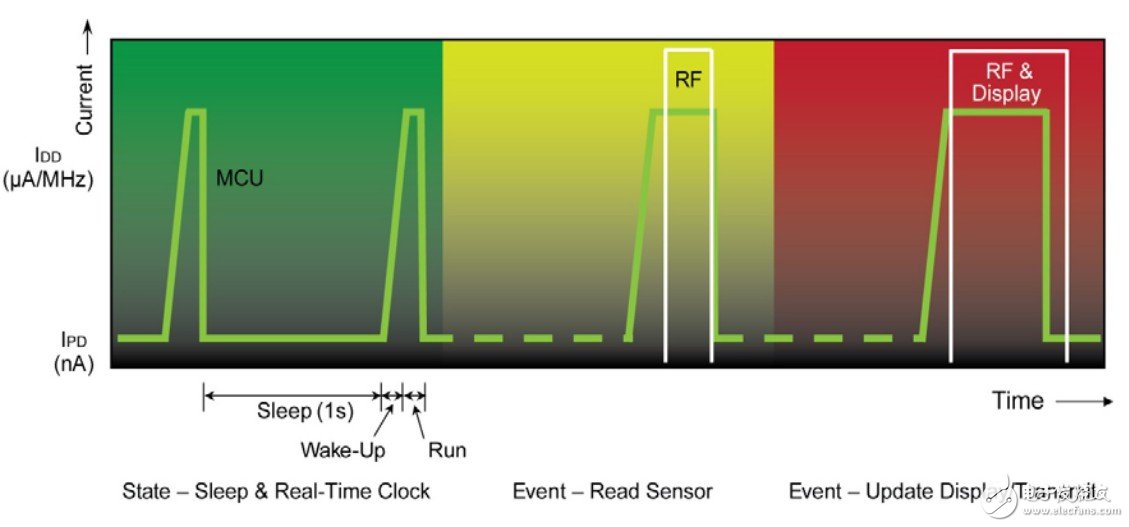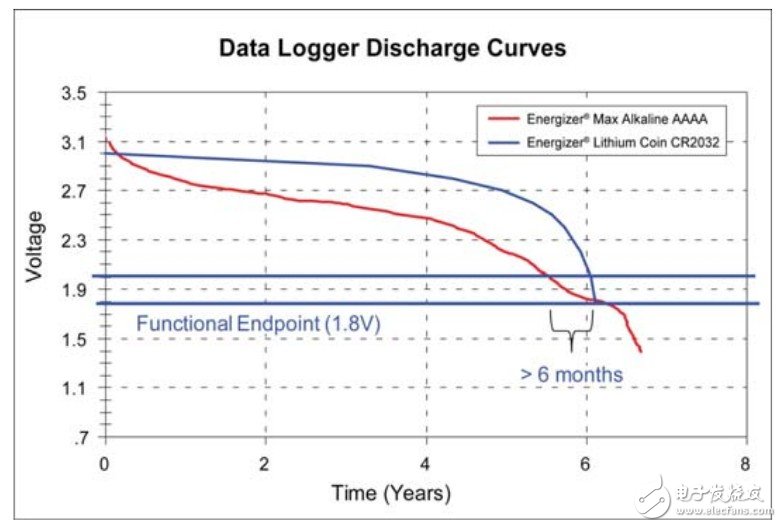Author: Microchip Microcontroller Architecture Division, Senior Applications Engineering Manager David Otten / Microchip medical products company, senior applications engineer Joel Mach
Portable applications in the industrial segment require low power, reliability and high performance. Examples of such industrial applications include bar code readers, shipping data recorders, highway tracking devices, noise canceling headphones, small motor controls, and battery chargers. All devices that require battery power, zero pollution, or mobility have similar design requirements.
How do designers deal with these challenges? A new generation of stable, reliable, feature-rich and cost-effective microcontrollers is available. This article introduces the latest microcontroller features and design considerations to help designers address these requirements in industrial applications.
Keeping the microcontroller in the lowest power state for as long as possible is the primary goal of maximizing battery life. Fast running speed and short wake-up time mean low average power consumption, as shown in Figure 1. The faster the MCU works in a high-power state, the longer it takes to maintain a low-power state.

Figure 1 MCU current consumption - time curve
However, to extend battery life and reduce power consumption is only half done, you should also make full use of the battery. For this reason, it is very valuable to use a single chip microcomputer that supports low voltage operation. Figure 2 shows the life of an alkaline battery and a button-type lithium battery from Energizer in a typical data logger. This application is in a low-power state most of the time, occasionally waking up to process information. The recommended shelf life for alkaline AAAA batteries is five years. It can be seen that both alkaline and lithium batteries benefit from low operating voltages. In this case, an additional six months of battery life is added compared to an equivalent 2V microcontroller.

Figure 2 Data Logger Battery Performance Example
Another consideration in designing high performance and stable industrial applications is the oscillator characteristics of microcontrollers, the importance of which is often underestimated. Oscillator characteristics can affect many aspects, including performance, system cost, manufacturability, and reliability.
The new microcontrollers operate at higher speeds and can run at full speed without an external clock source. A variety of internally generated clock frequencies are also available. This allows the software to switch to lower frequencies as the voltage drops to stay within the operating specifications or to increase speed after connecting the power supply.
Another common challenge in the manufacturing process is that the crystal sometimes fails to oscillate reliably. Some common causes of this problem are component quality changes, flux residues, and wiring negligence. Many of these problems can be avoided by choosing a high-quality crystal and implementing some wiring and test techniques (such as negative resistance testing), which are available from crystal and microcontroller manufacturers. It can also be helpful if the crystal bias is allowed to be configured, especially for low frequency circuits. This allows the bias to be increased to ensure reliable oscillation under various conditions or to reduce the bias voltage to reduce power consumption. Some extra work will help the manufacturing team avoid these types of thorny issues.
An excellent feature that improves reliability is the fail-safe clock monitor. It continuously monitors system clock transitions. Once a few conversions are missed, it automatically switches the clock source to the internal oscillator and interrupts the CPU. This allows the microcontroller to maintain critical functions and perform an orderly shutdown.
Although well designed, low voltage microcontrollers can be used for high reliability applications, sometimes 5V operation is still required. It simplifies board layout, improves noise immunity, and increases support for legacy designs. However, as the design size decreases, the usability of the new 5V microcontroller is also reduced. Chip manufacturers are realizing that the demand for these devices is still high, and new high-voltage operating techniques have been developed to find new ways to make smaller, cheaper microcontrollers run at higher voltages. This is good news for designers looking for a 5V job advantage.
To further improve noise immunity, port and peripheral pins use multiple input buffers. Different functions may have different input buffer types, although they are multiplexed on the same pin. Schmitt-trigger inputs provide a wider input threshold range than comparable TTL devices and increase the system's noise margin.
Higher port drive capability is another important design consideration. This is more than just driving the LEDs directly. Higher port drive capability prevents unwanted coupling near well-known circuits that introduce noise, such as switching regulators and high-speed PWM signals, but at the expense of increased radiated noise. A small RC filter on the port pins will help offset these effects while maintaining the advantages of high drive capability.
The internal data EEPROM seems to be the same as the floppy disk drive and the 8-track player. This is a natural result of manufacturers turning to small process sizes, which also makes integration costly. Some software solutions use flash memory to emulate data EEPROM, but some applications require independent data storage. The latest microcontroller products offer high-endurance data EEPROM and remain cost-effective. It has a rated erase/write count of up to 100,000 times. Note the minimum voltage range for write operations, which is sometimes higher than the minimum operating voltage of the microcontroller, which limits the effective operating range.

Figure 3 Flowmeter example
As shown in Figure 3, the flowmeter is a good example of the subject matter covered in this article. The integrated charging time measurement unit (CTMU) of the microcontroller reads the flow, temperature and capacitive touchpad of the flowmeter. The battery voltage is monitored using a 12-bit differential analog-to-digital converter (ADC) and a reference voltage. The ultra low power wake-up module performs periodic wake-ups. As shown in this example, choosing the right microcontroller will provide a stable, reliable and powerful internal low-power solution.
—— This article is selected from the electronic enthusiast website September special issue “Intelligent Industry Special Issueâ€, please indicate the source, please do it!
16L Agriculture Drone,Farm Fumigation Drone,Agricultural Sprayer Uav,Agriculture Drone
Xuzhou Jitian Intelligent Equipment Co. Ltd , https://www.jitianequipment.com
